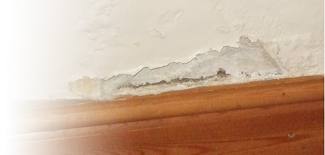What is Rising Damp?

You have probably heard many damp proofing specialists talk about rising damp but do you understand what it actually is? It can sound quite technical if you’re not an expert in the field but is something that is quite common. Rising damp is caused when water spreads from the ground into a property’s brickwork. The process that takes place is capillary action which basically means water is able to find its way through cracks in the bricks. This type of problem is usually found in the metre or so of walls.
Modern housing is immediately fitted with a damp course, this has been true since 1875 and this basically means homes are built with a waterproof coating built into the walls to stop rising damp. Unfortunately the problem can still occur as the rising damp is able to find different ways around the home under patios, raised flower beds and such like.
Symptoms
Rising damp can usually be located by the appearance of damp patches and stains usually up to a metre up a downstairs wall. The only way it will spread higher is if you’ve allowed it to go completely unchecked. Stained or lifting wallpaper can also be symptoms of rising damp as well as softened plasterwork. It isn’t necessarily damp every time but it’s well worth keeping in mind.
Treatment
The most common treatment for rising damp is of course the installing of a damp proofing course. This tends to involve stripping away the water-damaged skirting board and plaster to reveal the exposed brick up to approximately one metre. Most damp proofing specialists will then drill into the brick and inject a specialised silicone-based chemical into the brickwork. The chemical spreads through the bricks and mortar and provides a new waterproof protection against the damp. The wall is then rep-plastered with a sand and cement mixture which also contains a waterproof additive.
There are many damp coursing firms on the market but before choosing your specialist it’s important to check their track record and ensure they are experienced in the industry. It’s an important job which could cause structural damage to your home if done incorrectly so you need to be sure the right person for the job is completing it.
Prevention
Moisture is the cause of rising damp so it stands to reason you need to prevent moisture in your home to prevent the damp. Ensure your walls are damp resistant is the main key to avoiding any serious problems. This can mean things such as ensuring all the plasterwork in your home, especially on the ground floor is completely damp resistant.
You should also ensure that your walls are well ventilated. This might mean you need to have further damp proofing treatments carried out but this is always a worthwhile preventative measure to avoid the potential damage causes by a serious case of rising damp.
The same people who treat a damp problem are more than capable of protecting your home against the risk of damp so you can contact the same companies for this type of quote.
Harry Moore is a damp proofing specialist from Lewisham. He works mainly in residential areas providing preventative damp courses in homes.
